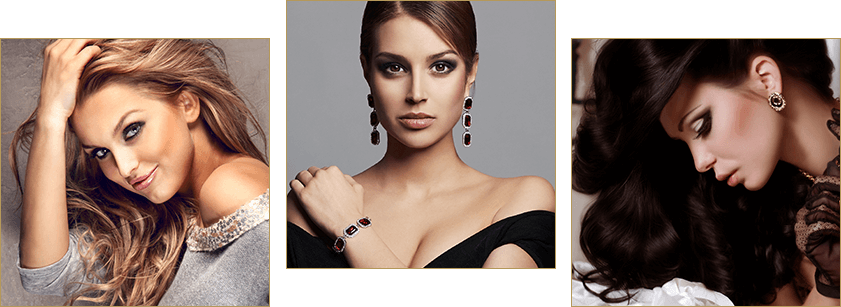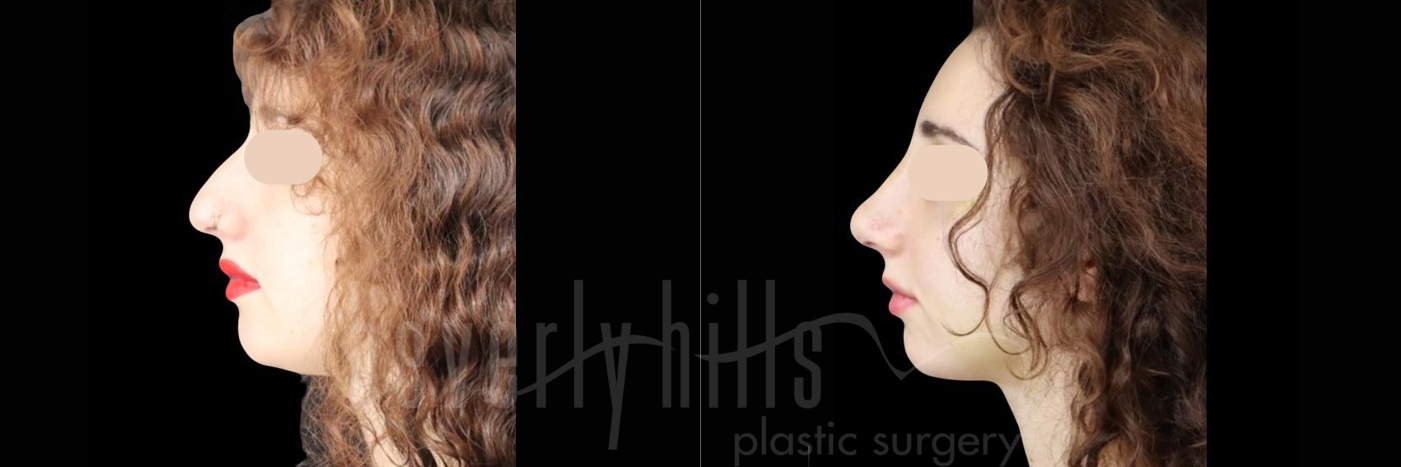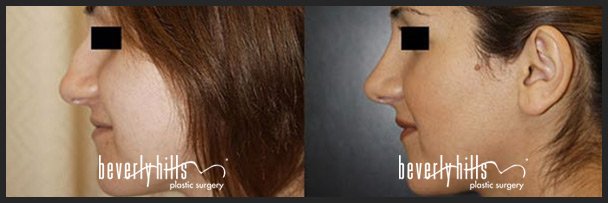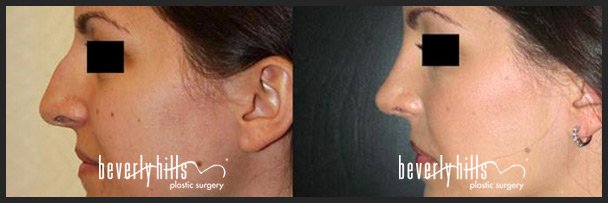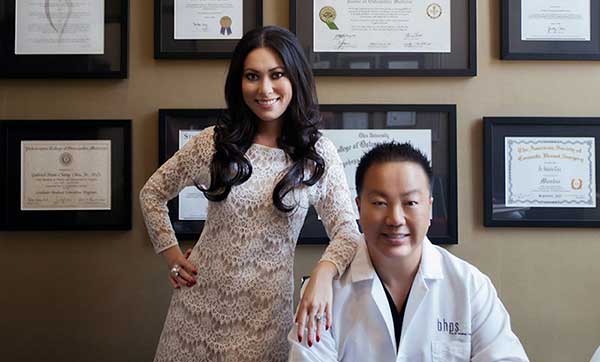Rhinoplasty Beverly Hills, CA
Nose size and shape can play a central role in the face’s overall appearance. However, many people have a nose that they feel is out of balance with the rest of their features. With rhinoplasty in Beverly Hills, Dr. Chiu provides his patients with a personalized cosmetic solution to refine and enhance their facial aesthetic. Call our office or use our online form to start with your consultation today.
What Is a Rhinoplasty?
Aesthetic nose surgery, or rhinoplasty, continues to be one of the most popular types of cosmetic surgery across the world. This facial plastic surgery involves surgical alteration of the nose’s features, including various aspects of its size and shape. With modern surgical techniques, the outcomes of nose procedures are better than ever. Incisions are minimal, techniques are improved, and safety is enhanced. The procedure involves adjustments such as:
- Shaving the nasal bones
- Repositioning nasal cartilage
- Adjusting tissues
Each procedure is adapted to bring out a natural look to the patient’s results, ensuring their nose highlights the best of their features. Some common aspects of a rhinoplasty (also called a nose job) can include:
- Adjusting the nasal tip
- Smoothing out the nasal bridge
- Improving nostril size or shape
- Restoring nasal symmetry
- Address a deviated septum (septoplasty)
- Fix previous results through revision rhinoplasty
Benefits of Rhinoplasty
-
Feeling more confident about your appearance
-
Restoring balance to your facial features
-
Improving facial harmony and symmetry
-
Refined yet natural-looking results
-
Create a more youthful aesthetic
-
Easily combine with other facial procedures
Overview of a Typical Nose Job Surgery One of the advantages of working with an experienced surgeon is the degree of customization of your procedure. From technique to results, Dr. Chiu personalizes each patient's nose surgery to optimize both safety and outcomes. Below, we break down the overall outline of a typical experience.
Initial Consultation
The consultation sets the foundation for a positive experience in all rhinoplasty surgeries. The best advice for preparing for the consultation is to be ready for open communication. The more open you are with your surgeon, the better he can personalize your procedure. This one-on-one meeting can involve:
- Learning all the details of the procedure
- Discussing your medical history and candidacy
- Having an exam
- Explore procedure options
- Begin building a procedure plan
- Schedule your procedure
Preparing for the Procedure
Once your procedure date is locked in, you can begin preparing for your procedure. On your end, this is quite straightforward and usually only requires a couple of steps. These typically include:
- Having bloodwork done
- Pausing certain medications
- Avoiding smoking or tobacco use
- Avoiding food from the night before surgery until your surgery is complete
- Asking any questions you might have
Dr. Chiu will provide additional individual instructions if needed. Always feel free to reach out to our practice if you have any questions leading up to your surgery.
Day of the Procedure
- Duration: A typical procedure will last between 1.5 and 3 hours. Duration can be longer for more complex and extensive treatment. Dr. Chiu will provide an individualized estimate before your procedure begins.
- Anesthesia: We use general anesthesia to ensure patients have no pain during surgery. This method also allows the surgeon to focus all their attention on the procedure at hand. We take every measure to promote a safe anesthesia experience for patients.
- Incisions: Dr. Chiu uses one of two main techniques for patients. An open rhinoplasty uses an incision between the nostrils. It allows for easier reshaping due to increased visibility of the nose’s structures. The closed rhinoplasty technique places incisions within the nose for no visible scarring. However, it is a more limited technique.
- Wrapping Up: Dr. Chiu closes the incisions. You are taken to a comfortable recovery room where you can rest. Once you are ready, you can have someone (ideally, a friend or family member) drive you home.
Before & After Photos
Recovering from Your Rhinoplasty
-
The First Week
Patients can expect to take downtime off from work, avoid all activity, and focus on healing. Swelling and bruising of the nose are normal. Pain is easily managed with medication.
-
The Second Week
Swelling and bruising should begin to fade. Most patients can return to work by the end of this week. However, continue to avoid most physical activity.
-
Third to Fourth Weeks
All initial swelling should have resolved, and patients can begin enjoying their results. However, physical activity should remain limited. Continue following post-procedure care instructions.
-
Beyond
A full return to your routine can happen around 6 to 8 weeks for most patients. Dr. Chiu will see patients for follow-up visits as needed and provide additional information.
What Are the Results Like?
While the changes to the nose are all made by the end of the procedure, patients will best enjoy the results once any swelling has faded. The initial swelling phase lasts a couple of weeks. But after this, you can start to enjoy the new shape of your nose. However, residual swelling can take up to a few months to subside. While this should not impact how soon you can enjoy your results, it is important to remember. Additional tissue settling can occur during this period, leading to further improvements and a fully refined final result. Results should generally be permanent and last for years. However, changes to the nose can still occur with aging or due to accidents. To preserve your results, some things to keep in mind are:
- Avoid high-impact sports
- Be gentle with your nose for several months until fully healed
- Follow all post-procedure instructions to facilitate healing
- Adhere to a healthy overall lifestyle
Can You Combine Rhinoplasty with Other Face Procedures?
Combining procedures can be a highly effective solution for many patients. When two procedures are done at the same time, it is easier to create results that balance with each other. Additionally, it means patients only need to go through one recovery period rather than several. During your consultation, you can discuss all your concerns with Dr. Chiu and see if a combination plan is the right solution for you. Common combinations can include:
- Face lift or face liposuction
- Eyelid surgery
- Chin augmentation
- Brow lift
- Cheek lift
Why choose Dr. Chiu?
As a specialist who is double board-certified in plastic and reconstructive surgery, Dr. Chiu has the expertise and experience to deliver results that patients can love for years. His mission is to empower each patient to feel comfortable and confident in their own body, experiencing the quality-of-life benefits that such a sensation can create. His practice revolves around the patient at every step, from safety to satisfaction.
Book Your Consultation
Dr. Chiu is proud to perform rhinoplasty near you for patients in Beverly Hills, Los Angeles, and the surrounding areas. Start your journey toward seeing a personal refined aesthetic when you schedule a consultation for a nose job at Beverly Hills Plastic Surgery Inc. Call our office or use our online form to take that first step and begin working with a leading, board certified plastic surgeon to see exceptional cosmetic results. We look forward to helping you achieve your best.
